On 25–26 May, this two-day workshop will explore the connections between philosophy of language and decision theory.
Theorists working on the philosophy of language, and theorists working on decision theory, are not often brought into contact. However there are numerous interesting and fruitful connections between the two areas. For example, intensionality, vagueness, indexicals and implicature are all topics from the philosophy of language which raise interesting questions for decision theorists.
The aim of this workshop is to explore some of these connections. Speakers include philosophers working in both of these areas, and at the intersection between the two.
Programme
Day 1: Thursday 25 May |
|||
| 9:00–10:00 | Anna Mahtani (LSE) – Introduction: “What the objects of credence cannot be” | LAK.206 | |
| 10:15–11:30 | Julien Dutant (KCL): “Enkrasia, normative luminosity and the semantics of ‘ought'” | LAK.206 | |
| 11:45–13:00 | Rosanna Keefe (Sheffield): Degrees of Belief, Expected and Actual | LAK.206 | |
| Lunch | |||
| 14:15–15:30 | Ofra Magidor (Oxford): “Conditional Acceptance” | LAK.206 | |
| 15:45–17:00 | Robbie Williams (Leeds): “Options!” | LAK.206 | |
| 17:15–18:30 |
Panel discussion Richard Bradley, Terry Horgan, Anna Mahtani & Christian List: “What are the objects of credence?” |
LAK.206 | |
Day 2: Friday 26 May |
|||
| 9:45–11:00 | Chloé de Canson (LSE): “The Paradox of the Two Envelopes” | LAK.206 | |
| 11:15–12:30 | Paul Egré (CNRS): “Typicality and Graded Membership in Dimensional Adjectives” | LAK.206 | |
| Lunch | |||
| 14:00–15:15 | Terry Horgan (Arizona): “The Intensionality and Weak Hyper-Intensionality of Epistemic Probability: Lessons for Decision Theory” | LAK.206 | |
| 15:30–16:45 | Daniel Rothschild (UCL) & Harvey Lederman (Pitt): “Meaning and Strategy: problems and prospects for building meaning into game theory” | LAK.206 | |
| 17:00–18:15 | Christian List (LSE): “Supervaluationism about vagueness: A judgment-aggregation perspective” (joint work with Paul Egré and Franz Dietrich) | LAK.206 | |
Abstracts
Chloé de Canson (LSE): “The Paradox of the Two Envelopes”
In this paper, I propose a solution to the paradox of the two envelopes. I argue that issues surrounding designation are at the heart of the problem, and that this has important implications for decision theory.
Julien Dutant (KCL): “Enkrasia, normative luminosity and the semantics of ‘ought'”
This paper aims at bringing together two separate strands of recent literature. The first is the debate over level principles that relate what one ought to do with what one ought to believe about what one ought to do, and related principles for reasons and rationality. The second is recent proposals for the semantics of “ought” and related terms. The paper brings good news and bad news to the friends of level principles. The good news is that certain semantics proposals—notably, non-factualist ones—validate level principles. The bad news is that the proposals come with commitments they may not like.
Paul Egré (CNRS): “Typicality and Graded Membership in Dimensional Adjectives” (joint work with Steven Verheyen)
A central problem for theories of categorization concerns the status of the boundaries of vague categories. Various influential accounts treat inner or outer thresholds as primitive for decisions of membership (Bartsch and Vennemann 1972; Borel 1907; Egré, 2016; Fara 2000; Hampton, 2007; Kennedy 2007; Lassiter & Goodman, 2015; Verheyen, Hampton, & Storms, 2010; Williamson, 1994). An alternative is to derive the boundaries between categories from cognitive reference points (Rosch 1978, Gärdenfors 1978, Douven et al. 2013, Douven et al. 2016). Thus, Douven and collaborators have shown that the degree of membership of an item intermediate between two color categories (green vs. blue) or two shape categories (vase vs. bowl) can be derived from the categories’ typical instances. An issue left open is whether the conceptual spaces approach can account for graded membership in more abstract categories. I will report on joint work with Steven Verheyen in which we tested the CS account on dimensional adjectives (such as “tall”), for which the notion of prototype is more problematic. Our approach shows that the account can be extended successfully to that class, taking advantage of systematic relations of antonymy in those adjectives. On the other hand, it suggests that decisions of membership at the individual level are not as successfully predicted from typicality judgments as they are at the group level. Decisions of membership at the individual level appear to involve more factors than just the distance to typical values.
Terry Horgan (Arizona): “The Intensionality and Weak Hyper-Intensionality of Epistemic Probability: Lessons for Decision Theory”
Epistemic-probability contexts are both intensional and weakly hyper-intensional: unrestricted substitutivity salva veritate of co-referring singular expressions does not obtain for these contexts – not even if both singular expressions are rigid designators. Because of this, various kinds of non-standard expected utility can arise for a single decision problem and can rank the available acts differently, in such a way that maximizing each kind of non-standard expected utility is impossible. This raises a question for decision theory: when, and why, does rationality require maximizing a given kind of non-standard expected utility (and when not, and why not)? I will summarize my own work on this question, with specific attention to the two-envelope paradox.
Rosanna Keefe (Sheffield): “Degrees of Belief, Expected and Actual”
A framework of degrees of belief, or credences, is often advocated to model our uncertainty about how things are or will turn out. It has also been employed in relation to the kind of uncertainty or indefiniteness that arises due to vagueness, such as when we consider “a is F” in a case where a is borderline F. How should we understand degrees of belief when we take into account both these phenomena? Can the right kind of theory of the semantics of vagueness help us answer this? Nicholas J.J. Smith defends a unified account, according to which “degree of belief is expected truth-value”; this builds on his Degree Theory of vagueness that offers an account of the semantics and logic of vagueness in terms of degrees of truth. I argue that his account fails. Degree theories of vagueness do not help us understand degrees of belief and, I argue, we shouldn’t expect a theory of vagueness to yield a detailed uniform story about this. The route from the semantics to psychological states needn’t be straightforward or uniform even before we attempt to combine vagueness with probabilistic uncertainty.
Ofra Magidor (Oxford): “Conditional Acceptance”
In this paper I present a new challenge to the task of providing semantics for indicative conditionals, and the related epistemic question of when one ought to accept a conditional statement. The challenge takes the following form: I present a case involving an utterance of a certain indicative conditional. I then show that at least three prominent theories of conditionals predict that you ought to assign a high credence to this conditional, but I argue that this prediction is wrong. Finally, I discuss what conclusions we can draw from this case both concerning the semantics of conditionals, but also to epistemology more generally.
Daniel Rothschild (UCL) & Harvey Lederman (Pitt): “Meaning and Strategy: problems and prospects for building meaning into game theory”
Game theory has long been used to assess how meaningful signaling arises through strategic interaction (Lewis 1969, Crawford and Sobel 1982, Skyrms 2010). Such accounts tend to identify meaningfulness with features of certain plays at equilibrium (e.g. ‘fire’ means fire, because it is used when there is a fire in equilibrium). This tradition, while vital and interesting, fails to model the strategic effects of meaning on play since meanings are only defined relative to equilibria and thus cannot play a role in determining which equilibrium (if any) is reached in a given play. We focus on models that attempt to describe the effect of meanings on strategic play. The first class of model we consider, represents meanings as constraints on use of symbols (Milgrom 1981, Parikh 1991, Rothschild 2013). This tradition essentially bakes truthfulness into the meanings of symbols and is thus limited in scope. A second paradigm in the economics literature beginning with Farrell (1993) works by eliminating equilibria that could be upset by the sending of a ‘credible’ message. A third class of theories, based on models of bounded rationality, attempts to explain strategic use of meanings as a the result of level-k reasoning (Crawford 2003, Franke 2009). We argue that all of these programmes face severe defects in principle and practice and present a different class of theories of the effect of meaningful signaling on strategic play.
Robbie Williams (Leeds): “Options!”
Given a set of options, decision theory gives us some rules for picking the best (relative to certain probabilites/utilities). One question is where these probabilities/utilities come from (for a given agent, in a given practical situation). Another is where the options come from. I’m going to address the question of fixing an agent’s options, and trying to figure out how far we can push a simple answer: an agent’s options (in c) are all the things they’re able to do (in c). The tenability of the view will turn on the interpretation of decision theory: whether it’s trying to be a theory of narrowly rational choice or (part of) a theory of what one ought to do, all-things-considered. I’ll draw out some implications of the options-as-abilities view, and also its significance for the kind of metaphysics of mental content that I like.
Location
All talks will take place in room 2.06 of the Lakatos Building (marked “LAK” on the LSE Campus Map).

(click me for a handy Google map)
For further help finding your way please see the LSE Maps and Directions website.
Please contact the workshop organiser, Anna Mahtani, if you have any questions.
This workshop is supported by the Leverhulme Trust.
Featured Image: Hanoos / CC-BY-SA 3.0





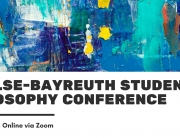
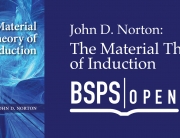


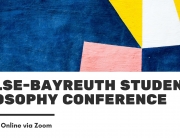




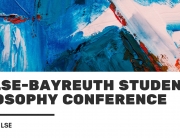










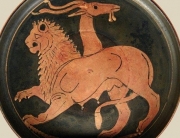






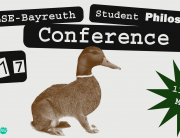

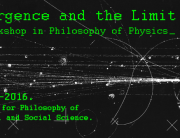
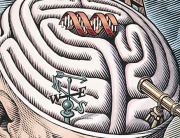



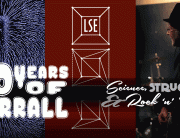




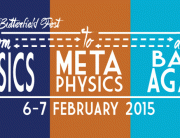

Connect with us
Facebook
Twitter
Youtube
Flickr